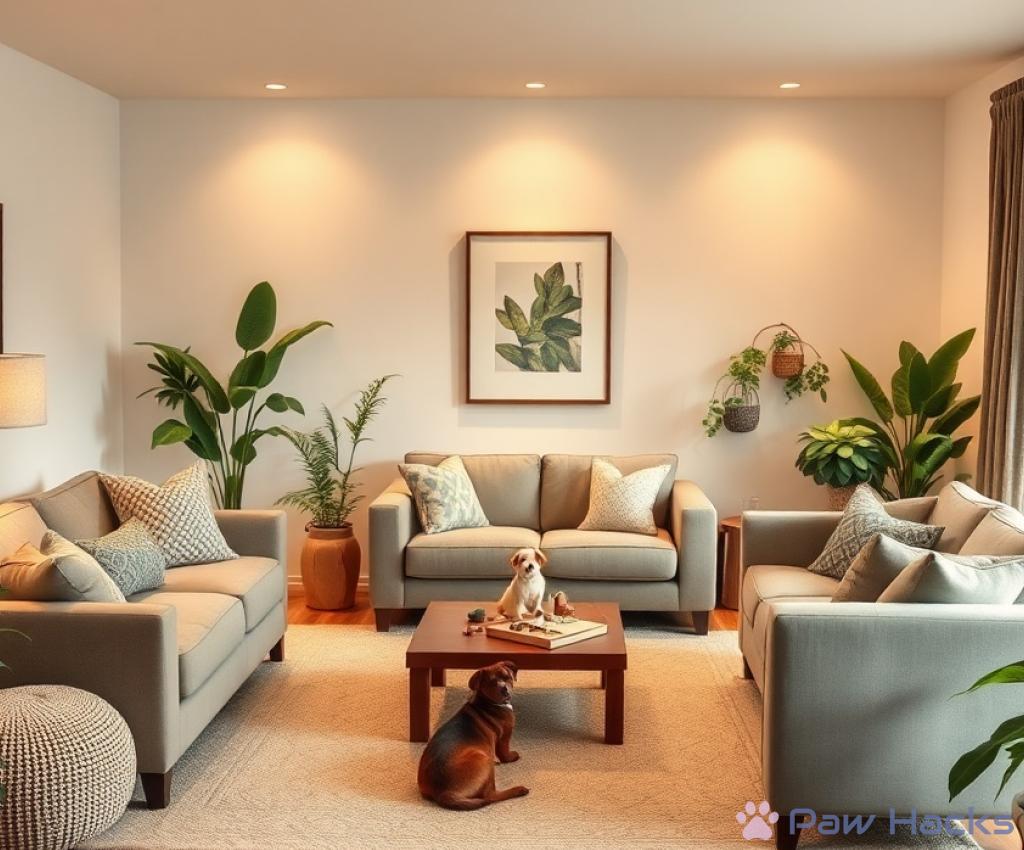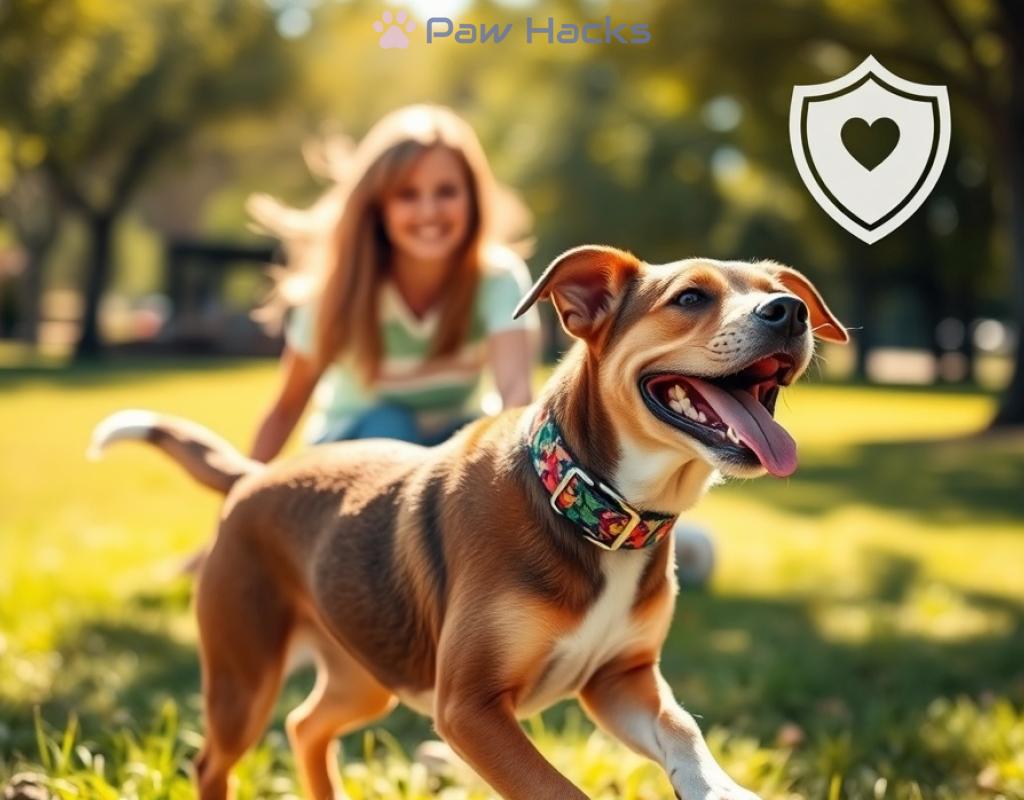Adopting Pets with Aggression Issues
Understanding the Roots of Aggression in Pets

Understanding why a pet may exhibit aggressive behavior is crucial for potential adopters. Aggression in pets can stem from a variety of factors, including past trauma, fear, and even genetics. By identifying these underlying causes, pet owners can better address and rehabilitate aggressive behavior, creating a safe environment for both the pet and the family.
Several key factors can contribute to a pet’s aggressive behavior. Recognizing these factors can help in forming a strategy for rehabilitation. Here are some common causes:
- Fear: Many aggressive pets act out of fear. This fear can be related to past abuse, noisy environments, or unfamiliar situations.
- Territorial Behavior: Some pets may feel the need to protect their space or belongings, leading them to act aggressively when they perceive a threat.
- Lack of Socialization: Pets that haven’t been properly socialized may not know how to interact appropriately with people or other animals, resulting in aggressive reactions.
- Medical Issues: Sometimes aggression can be a sign of pain or illness. A trip to the vet can help rule out any medical causes.
Once the roots of aggression are understood, the next step is to address the behavior effectively. This involves consistent training and sometimes professional help. Here’s a simple table to illustrate some techniques:
| Technique | Description |
|---|---|
| Positive Reinforcement | Rewarding good behavior with treats or praise. |
| Desensitization | Gradually exposing the pet to the source of fear in a controlled manner. |
| Consultation with Professionals | Working with trainers or behaviorists who specialize in aggression. |
By employing these techniques, pet owners can foster a more trusting relationship with their pets, ultimately leading to a happier home for everyone involved.
Creating a Safe Home Environment for Aggressive Pets

Providing a safe and nurturing environment is paramount when adopting a pet with aggression issues. It’s essential to create a space where the pet can feel secure, reducing their anxiety and the likelihood of aggressive behavior. This effort not only benefits the pet but also ensures the safety of everyone in the household.
One of the first steps in creating a safe home is to define clear boundaries. Pets, especially those with aggression issues, often feel more secure when they know their limits. Establishing safe zones where the pet can retreat when feeling overwhelmed is crucial. Here are a few tips on how to do this effectively:
- Designate a Safe Area: Choose a quiet room or corner of your home as a designated safe zone. Equip it with comfortable bedding, toys, and water.
- Use Baby Gates: Implement baby gates to restrict access to certain areas, allowing the pet to feel secure in their space.
- Minimize Noise: Keep the safe zone away from noisy appliances or high-traffic areas to help reduce stress.
Pets thrive on routine, and establishing a consistent schedule can significantly help in alleviating anxiety. Predictability in feeding, walking, and playtime can make a pet feel more secure. A structured environment fosters trust and helps the pet understand what to expect, diminishing their fear and aggression. Below are some practices to consider:
- Consistent Feeding Times: Feed your pet at the same times each day to create a sense of stability.
- Regular Exercise: Engage in daily walks and play sessions to help burn off excess energy and reduce stress.
- Training Sessions: Regular training not only reinforces positive behavior but also strengthens the bond between you and your pet.
Finally, fostering positive interactions with the pet is essential for building trust. This can be achieved through gentle socialization efforts and positive reinforcement techniques. Here are a few ways to encourage these interactions effectively:
- Invite Calm Visitors: When introducing new people to your home, ensure they are calm and patient, allowing your pet to approach on their own terms.
- Reward Good Behavior: Use treats and praise to reward your pet for calm behavior, helping reinforce positive associations.
- Monitor Body Language: Pay attention to your pet’s body language; understanding their signals can help prevent situations that may lead to aggression.
In summary, creating a safe home for pets with aggression issues involves establishing boundaries, maintaining a routine, and promoting positive interactions. By implementing these strategies, pet owners can cultivate a peaceful environment that supports the well-being of their furry companions.
Training Techniques to Manage Aggression in Pets
Managing aggression in pets requires a thoughtful and proactive approach. Training techniques are not just about correcting unwanted behavior; they focus on building a strong bond between the pet and the owner. By employing effective strategies, pet owners can help their aggressive companions feel more secure and understood. This, in turn, can drastically reduce aggressive tendencies over time.
One of the most effective methods for addressing aggression is positive reinforcement. This technique rewards good behavior rather than punishing bad behavior, which can often lead to increased anxiety and further aggression. By providing treats, praise, or playtime when your pet exhibits calm behavior, you encourage them to repeat those actions. It’s essential to remain consistent in this approach; the more your pet associates good behavior with positive outcomes, the more likely they are to respond appropriately in various situations.
Another valuable technique is desensitization. This involves gradually exposing your pet to the stimuli that trigger their aggression in a controlled manner. For instance, if your dog reacts aggressively to strangers, you can begin by allowing them to observe people from a distance where they feel safe. Over time, as they become more accustomed to the presence of others, you can slowly reduce the distance. This method allows pets to build confidence and learn that they are not in danger, decreasing their aggressive responses.
| Technique | Description |
|---|---|
| Positive Reinforcement | Rewarding good behavior with treats or praise to reinforce calmness. |
| Desensitization | Gradually exposing pets to triggers to help them acclimate and reduce fear. |
| Professional Help | Consulting with a professional trainer for tailored strategies and support. |
Incorporating these techniques into your training regimen not only helps manage aggression but can also foster a more trusting relationship. Remember that patience is essential; behavioral changes take time, and celebrating small victories along the way can motivate both you and your pet. By investing in these training techniques, you are taking significant steps toward creating a harmonious living environment for everyone involved.
The Importance of Patience and Consistency in Rehabilitation
When it comes to adopting pets with aggression issues, one of the most critical factors for success is the owner’s commitment to patience and consistency. These two traits are essential in fostering a trusting relationship between the pet and its new family. Understanding that rehabilitation is a journey rather than a quick fix can make all the difference in achieving a harmonious household.
Trust is the foundation of any relationship, especially with a pet that has experienced aggression issues. Consistent interactions help create a predictable environment, allowing the pet to feel safe and secure. Here are some aspects to consider:
- Routine Establishment: Adopting a daily routine can help your pet understand what to expect, reducing anxiety and fostering a sense of stability.
- Consistent Commands: Use the same commands and cues during training sessions. This consistency in communication aids comprehension and reduces confusion.
- Regular Positive Reinforcement: Reward your pet for positive behavior consistently. This helps reinforce the desired actions and gradually builds their confidence.
Rehabilitation is not something that happens overnight; it requires time and understanding. Patience plays a crucial role in the progress of a pet with aggression issues. Here’s why:
- Gradual Progression: Aggressive behavior doesn’t vanish instantly. Each small step forward, whether it’s a calm encounter with a stranger or a successful training session, should be celebrated.
- Avoiding Setbacks: Rushing the process can lead to setbacks. If a pet feels overwhelmed, they may revert to aggressive behavior, making the journey longer and more challenging.
- Emotional Recovery: Many pets come with emotional scars that need time to heal. Patience allows for a gradual rebuilding of trust and comfort.
Here are some effective strategies to help you stay patient and consistent throughout the rehabilitation process:
| Strategy | Description |
|---|---|
| Set Realistic Goals | Aim for achievable milestones rather than expecting immediate results. |
| Track Progress | Keep a journal of behavior changes and improvements to visualize progress over time. |
| Engage in Supportive Communities | Join groups or forums of pet owners who have faced similar challenges for encouragement and advice. |
Ultimately, adopting a pet with aggression issues requires a dedication to fostering a safe and loving environment. By embracing patience and consistency, pet owners can pave the way for a successful rehabilitation process, leading to a more joyful and fulfilling companionship.
When to Seek Professional Help for Aggressive Pets
Adopting a pet with aggression issues can be a rewarding journey, but it comes with its own set of challenges. As a responsible pet owner, knowing when to seek professional help is crucial in ensuring the safety of both the pet and the family. While many behavioral issues can be managed through patience and training, certain circumstances may require the expertise of a professional to effectively address the aggression.
Before deciding to consult a professional, it’s essential to identify the severity of your pet’s aggressive behavior. Not all aggression is the same, and understanding the different types can guide you in making an informed decision. Here are some warning signs that indicate it may be time to seek help:
- Frequent Outbursts: If your pet is consistently exhibiting aggressive behavior, such as growling, biting, or lunging at people or other animals, it’s crucial to get professional assistance.
- Inability to Manage Triggers: If your pet reacts aggressively in specific situations and attempts to desensitize them have failed, a professional can offer tailored strategies.
- Injury Risk: If your pet has already caused harm to another animal or person, immediate intervention is necessary to prevent future incidents.
- Escalation of Behavior: If you notice that your pet’s aggression is worsening over time, professional guidance can help halt this trend.
Seeking professional help can provide numerous benefits that enhance the rehabilitation process for your aggressive pet. Here are some key advantages:
- Expert Assessment: Professionals can accurately assess the root causes of aggression, which may be overlooked by pet owners.
- Customized Training Plans: Trainers and behaviorists can develop tailored strategies that align with your pet’s specific needs and triggers.
- Safety Techniques: Professionals can teach you effective safety measures to take during training and everyday interactions to protect both your pet and your family.
Finding the right professional for your pet’s needs is essential. Here’s a simple guide to navigate this process:
- Research Qualified Professionals: Look for certified trainers or behaviorists with experience in handling aggression issues.
- Read Reviews: Seek feedback from other pet owners who have worked with the professional you’re considering.
- Schedule an Assessment: Arrange an initial consultation to discuss your pet’s behavior and determine the best course of action.
In summary, while adopting a pet with aggression issues can be a fulfilling experience, it’s vital to recognize when professional help is needed. By understanding the signs of serious aggression and the benefits of seeking expert assistance, pet owners can create a safer environment for everyone involved. Remember, a proactive approach is key to transforming your pet’s behavior and ensuring a harmonious home.
Share this content:



